La Palma
The North and Santa Cruz
10/12/07 20:11
We set off for the north coast after a latish breakfast. First stop was the little town of Santo Domingo. This town is away from away from it all. Quiet and sleepy with several houses in need of some TLC.
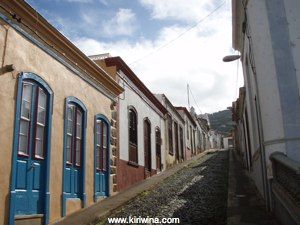
This house appeared abandoned.
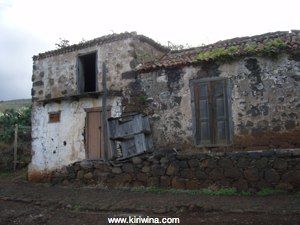
Town square with the Atlantic beyond. Next stop the Americas.
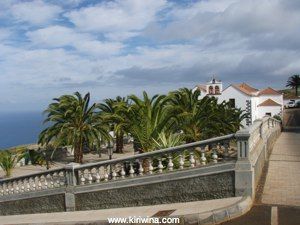
The north coast road winds up and down steep sided valleys with side roads leading off to little villages along the way. The shoreline is wild, rocky and often inaccessible.
We continued to Los Tilos, an area of temperate rainforest where not all the moisture came from rain. The height of this area is such that it is often shrouded in clouds formed when moisture laden air borne by the trade winds bumps into La Palma and rises to form cloud. So much moisture is deposited by these clouds that it is referred to as horizontal rain.
The steep valleys are heavily forested and damp.
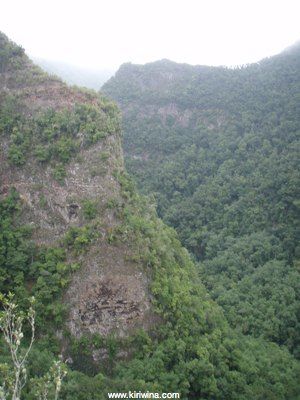
We took a 4km walk through the forest. This island is a hikers paradise.
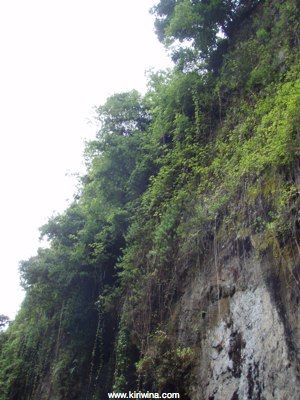
Run-off from the forest provides part of the water supply for Santa Cruz. It had a nice clean taste and I topped up my water bottle.
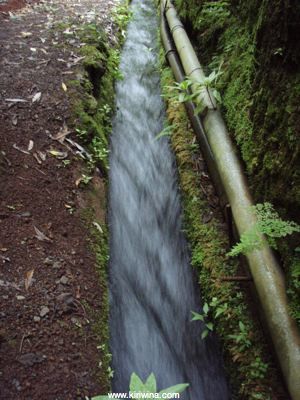
We then went down into the capital Santa Cruz.
Here, Santa Cruz marina looks settled but a lot of swell works it's way in and motion on the pontoons is substantial.
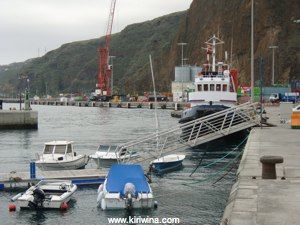
The pontoons are chain secured rather than with piles so movement is more pronounced. It looked safe enough and there were several visiting yachts but I suspect I would not be particularly comfortable on board.
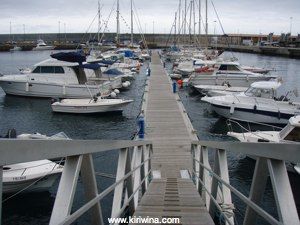
Santa Cruz is without doubt the most attractive town we have seen in the Canaries. Large enough to be interesting and small enough not to have been over developed.
Some of the many attractive buildings in Santa Cruz.
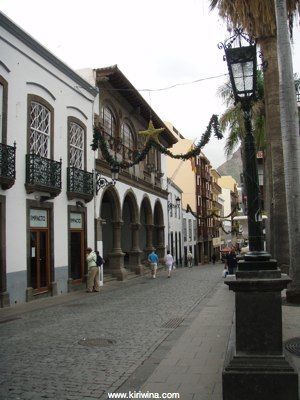
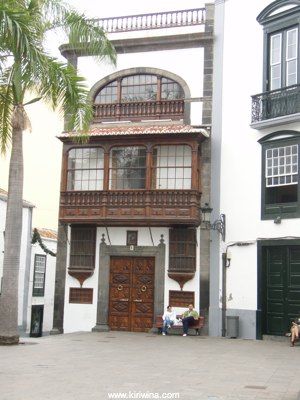
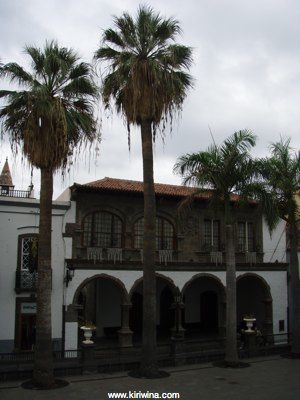
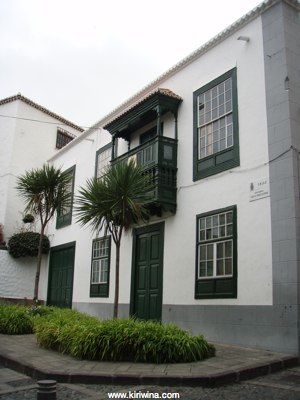
This little fellow is called Enano and he is the symbol they use to commemorate the end of a brief period of French rule on La Palma.
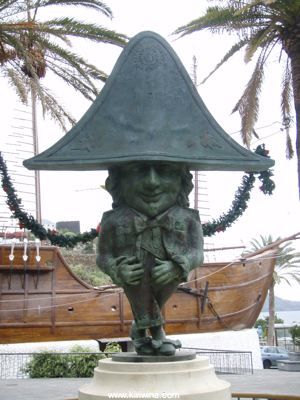
Late in the day we caught our flight back to Tenerife.
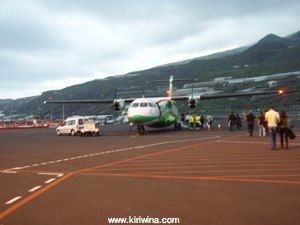

This house appeared abandoned.

Town square with the Atlantic beyond. Next stop the Americas.

The north coast road winds up and down steep sided valleys with side roads leading off to little villages along the way. The shoreline is wild, rocky and often inaccessible.
We continued to Los Tilos, an area of temperate rainforest where not all the moisture came from rain. The height of this area is such that it is often shrouded in clouds formed when moisture laden air borne by the trade winds bumps into La Palma and rises to form cloud. So much moisture is deposited by these clouds that it is referred to as horizontal rain.
The steep valleys are heavily forested and damp.

We took a 4km walk through the forest. This island is a hikers paradise.

Run-off from the forest provides part of the water supply for Santa Cruz. It had a nice clean taste and I topped up my water bottle.

We then went down into the capital Santa Cruz.
Here, Santa Cruz marina looks settled but a lot of swell works it's way in and motion on the pontoons is substantial.

The pontoons are chain secured rather than with piles so movement is more pronounced. It looked safe enough and there were several visiting yachts but I suspect I would not be particularly comfortable on board.

Santa Cruz is without doubt the most attractive town we have seen in the Canaries. Large enough to be interesting and small enough not to have been over developed.
Some of the many attractive buildings in Santa Cruz.




This little fellow is called Enano and he is the symbol they use to commemorate the end of a brief period of French rule on La Palma.

Late in the day we caught our flight back to Tenerife.

The South and Centre
09/12/07 20:13
Our flight to La Palma was unsociably early at 07:30 but we had no trouble getting to the airport and it left on time.
Approaching La Palma just after sunrise with higher areas poking through the cloud cover.
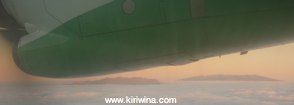
Our plane at La Palma airport situated just south of the capital Santa Cruz.
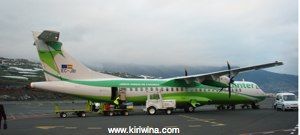
We first went south to Fuencaliente, the area of most recent volcanic activity in 1971.
The wall of tis crater slopes steeply before shallowing as it nears the sea.
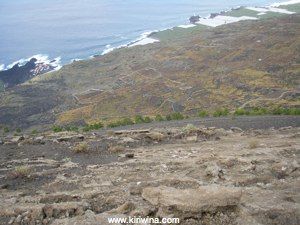
The south west coast of la Palma. A not particularly attractive area as it is disfigured by large scale banana plantations with ugly breeze block wind barriers.
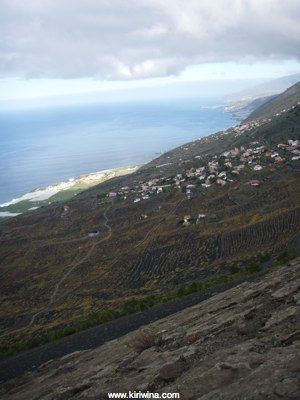
The 1971 volcano.
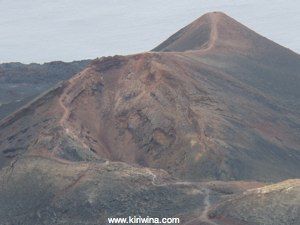
An older volcanic crater. We were not sure whether the pines had seeded naturally.
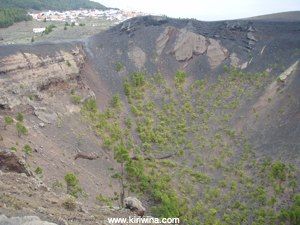
We drove up the west coast to Tazacorte where we had booked a hotel. The hotel Valle Aridane. Cheap and pretty basic but conveniently located near the Caldera de Taburiente national park.
Leaving the hotel we drove up to the park visitor centre near El Paso. Caldera de Taburiente is the largest volcanic crater in the world. The western seaward side is missing and what is left is a huge heavily forested ampitheatre.
It is possible to drive into the park to the Mirador de la Cumbrecita.
Looking south from the Mirador with cloud rolling over the crater edge.
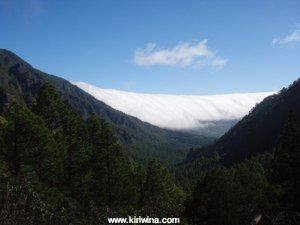
From Mirador de la Cumbrecita there is a wide selection of hiking routes some of which involve overnight stops. We chose a shorter 5 km circuit.
The pines are huge and grow from almost vertical slopes in places. They can grow to 60m in height and live for up to 500 years.
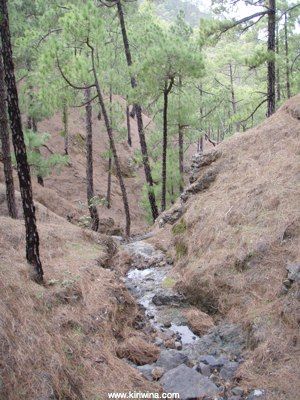
After our hike we drove through a tunnel under the eastern side of Caldera de Taburiente.
Cloud rolling down the slope towards the tunnel entrance.
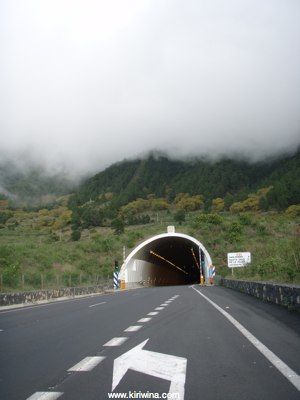
Then we drove down to the coast at Santa Cruz, north for a while and then inland climbing the northern side of Caldera de Taburiente.
As we climbed we rose above the clouds and were presented with a stunning view of Tenerife and El Teide across the clouds.
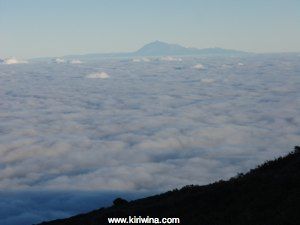
The road continued to climb and it started to get quite cold. We went right up to a lookout near the cluster of Observatorios Astrofisicos. This was the jaw on the floor, wow factor off the scale moment of our visit to the Canaries.
We looked down onto the Caldera de Taburiente partially obscured by cloud and lit by the sun low in the sky to the west. Absolutely breathtaking! A picture can in no way do justice to this immense spectacle. The clouds at centre top were in constant motion as they rolled over the crater edge. We stood and watched for quite a while.
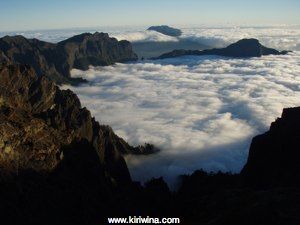
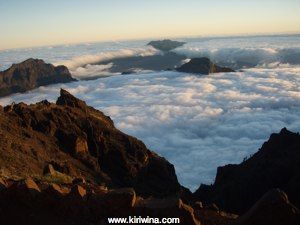
One of the many observatories on La Palma.
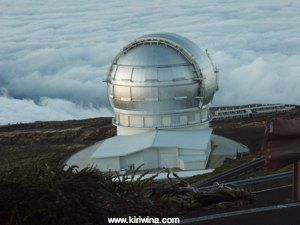
It was getting dark and we were very low on petrol. We coasted virtually all the way down the mountain where we filled up in Puntagorda before returning to our hotel.
Approaching La Palma just after sunrise with higher areas poking through the cloud cover.

Our plane at La Palma airport situated just south of the capital Santa Cruz.

We first went south to Fuencaliente, the area of most recent volcanic activity in 1971.
The wall of tis crater slopes steeply before shallowing as it nears the sea.

The south west coast of la Palma. A not particularly attractive area as it is disfigured by large scale banana plantations with ugly breeze block wind barriers.

The 1971 volcano.

An older volcanic crater. We were not sure whether the pines had seeded naturally.

We drove up the west coast to Tazacorte where we had booked a hotel. The hotel Valle Aridane. Cheap and pretty basic but conveniently located near the Caldera de Taburiente national park.
Leaving the hotel we drove up to the park visitor centre near El Paso. Caldera de Taburiente is the largest volcanic crater in the world. The western seaward side is missing and what is left is a huge heavily forested ampitheatre.
It is possible to drive into the park to the Mirador de la Cumbrecita.
Looking south from the Mirador with cloud rolling over the crater edge.

From Mirador de la Cumbrecita there is a wide selection of hiking routes some of which involve overnight stops. We chose a shorter 5 km circuit.
The pines are huge and grow from almost vertical slopes in places. They can grow to 60m in height and live for up to 500 years.

After our hike we drove through a tunnel under the eastern side of Caldera de Taburiente.
Cloud rolling down the slope towards the tunnel entrance.

Then we drove down to the coast at Santa Cruz, north for a while and then inland climbing the northern side of Caldera de Taburiente.
As we climbed we rose above the clouds and were presented with a stunning view of Tenerife and El Teide across the clouds.

The road continued to climb and it started to get quite cold. We went right up to a lookout near the cluster of Observatorios Astrofisicos. This was the jaw on the floor, wow factor off the scale moment of our visit to the Canaries.
We looked down onto the Caldera de Taburiente partially obscured by cloud and lit by the sun low in the sky to the west. Absolutely breathtaking! A picture can in no way do justice to this immense spectacle. The clouds at centre top were in constant motion as they rolled over the crater edge. We stood and watched for quite a while.


One of the many observatories on La Palma.

It was getting dark and we were very low on petrol. We coasted virtually all the way down the mountain where we filled up in Puntagorda before returning to our hotel.
